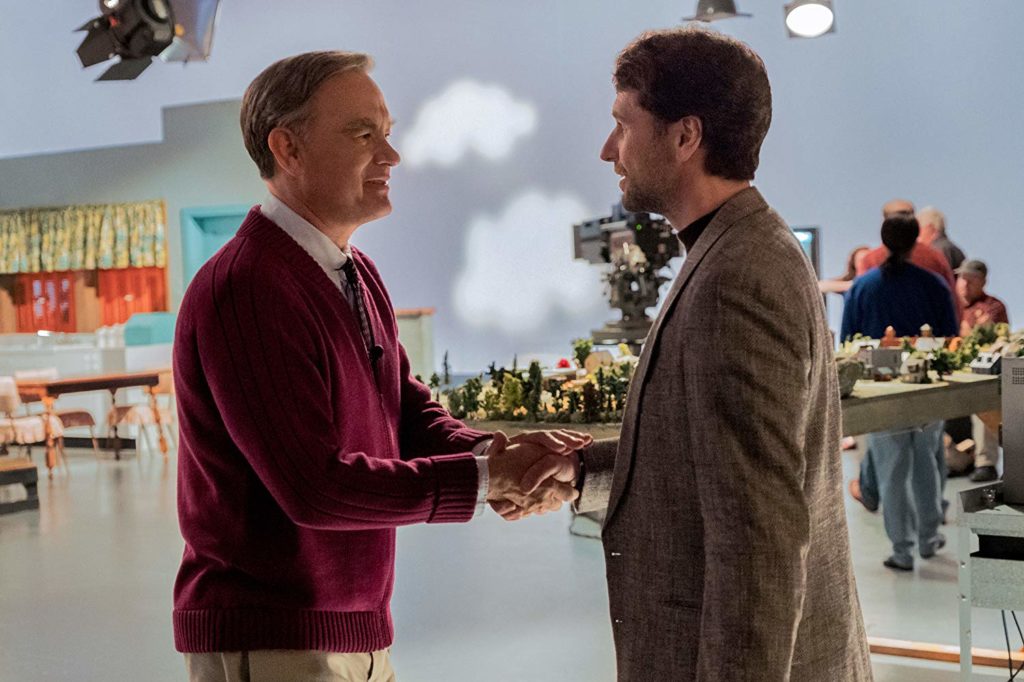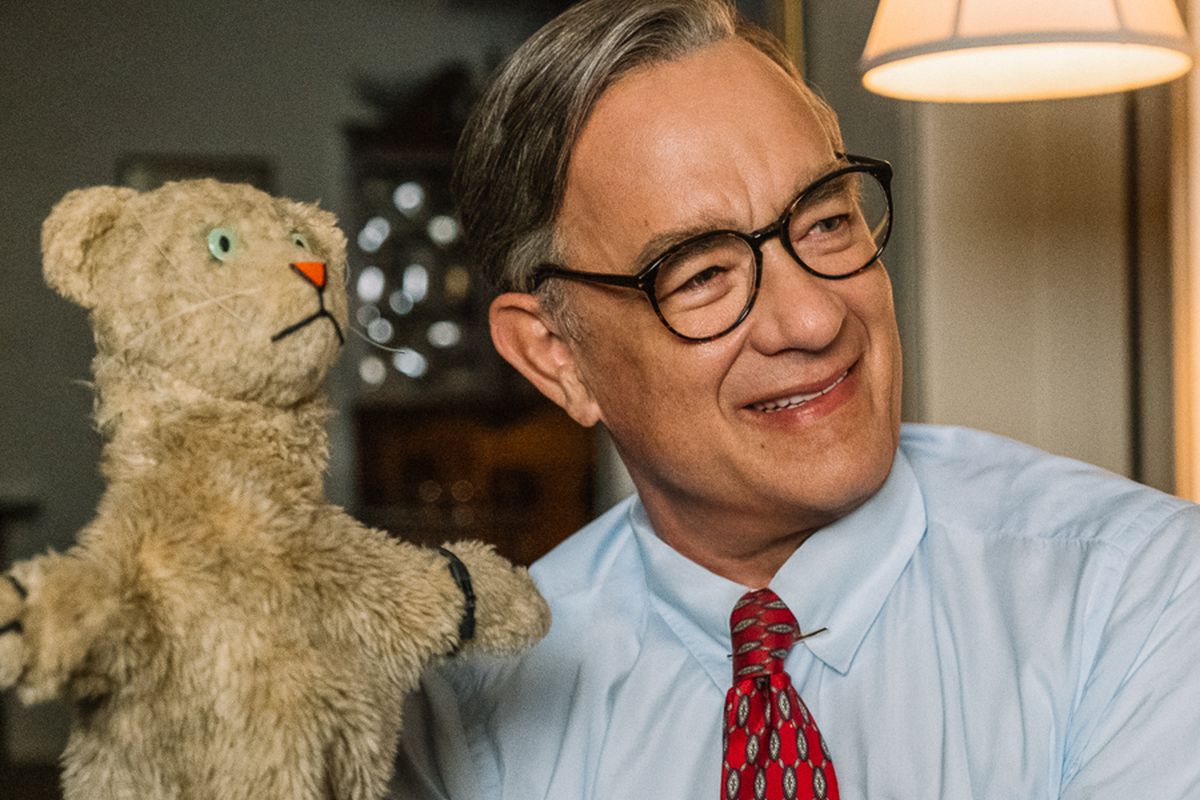Hank’s depiction of Mr. Rogers reminds us it’s all about processing our feelings and being okay.

Tom Hanks, Matthew Rhys
Photo by Lacey Terrell – © Sony Pictures Entertainment
Review
The world is suffering, and it has been some time now. The environment is near a point of no return. Politics are skewed and directed toward self-interest and misrepresentation. Power is abused.
And entertainment itself, the face of our culture, is reflective of these times… and that view is rather jaded. There’s a lot to be upset, and even hateful, about your fellow human being.
Which is why I stress Hollywood needs more movies like these. Because ‘A Beautiful Day in The Neighborhood’ is none of that. It’s a pure depiction of empathy coming out of a place of nothing but kindness.
The movie follows Esquire columnist Tom Junod (Lloyd Vogel in the movie), a cynical workaholic and neglectful father, who comes from a broken family. Lloyd is a reputed investigatory journalist and gets an assignment to cover a fluff piece on Mr. Rogers as one of America’s Heroes.
Thinking Rogers is a phony or merely character the man puts on, he tries to see why Rogers puts on this persona and surely discovers, that the man was, more-or-less, exactly the person he portrayed on television. Something that had a profound effect on Lloyd and as a result, his family.
The article becomes less of a piece about what made Mr. Rogers so precious, and more of an example of how Fred Rogers influenced people. The journalist, using himself and his own struggles as a prime example.
The film is all about embracing what it’s like to be vulnerable. What it’s like to feel like a child again, but rather than skew away from what makes us afraid in the face of danger, embrace the uncomfortable emotions, process them, and find a way to handle living forwards as our best all-embracing selves.
It’s a highly emotional and beautiful movie and I highly recommend it for any cynics much like myself. Or those who just feel lousy this Holiday season.
This is by far a feel-good movie.
Who is Mr. Rogers?
Mr. Rogers was a man who ran a public access show about his neighborhood for nearly 50 years. Stopping just beyond the new millennium. A former Presbyterian minister turned TV figurehead, who spent a lifetime helping people and caring for others. Because everyone, not only as their best selves but as they were, flaws and all, deserved to be valued. And deserved to be a friend.
His message was clear: we all struggle. We all have these powerful emotions and they’re not always positive. But that’s okay. It’s part of being human. It was all about how and what we did with these emotions, that mattered.
Mr. Rogers valued simplicity, repetition, and silence. Moments to let the audience feel. It was a great method for teaching children compassion and humility. This movie, very much a prime example.
What’s unique in this film is that Rogers himself serves as the hook for the audience in the movie. You want to see him on screen and can’t wait until his next line or moments.
A lot of this is due to Tom Hank’s stellar performance, who not only captured Fred Rogers’ patience and kindness on camera, but embodied the man’s mannerisms, quirks, and wit, becoming the living embodiment of Fred. The lines blurring over who is beloved more.
Hanks is also, oddly enough, a distant sixth cousin of Fred Rogers in real life. Which he’d only learned via Ancestry.com in preparation for this movie.
The Movie was also inspired by the Focus Features documentary ‘Won’t You Be My Neighbor?’
Techniques
One of the unique things about the film is its use of puppetry and animation. In classic homage to Fred Rogers, we see a lot of puppets simulating real-life locations and settings, beset within transitions and used for narrative effect.
With special behind the scenes videos of how they utilized the techniques during the credits.
The narration of the film focuses on Mr. Rogers telling the story of Lloyd and his family. It breaks the fourth wall by pretending that Lloyd is the subject of an episode of the movie, giving Fred leeway to openly talk about his friend.
This allows for some intriguing cinematic blending between the real and surreal. With some of the climax of the movie, having Lloyd face his real-life problems and traumatic past, in an almost Mr.Rogers themed devolving psychedelic trip. Though rest assured, no drugs are used in this movie.
Final Thoughts
The only issue I had with the movie is that it can feel a little bit boring early on, though this could also just be because it’s calm Rogers talking for good chunks of the movie, and I always fell asleep to those scenes as a kid as I’m sure a lot of us had.
Still, the message is clear: This movie is a feel-good film about how to deal with your emotions in a healthy way.
9.5/10 all around.
You can watch ‘A Beautiful Day in The Neighborhood’ in theatres right now.

